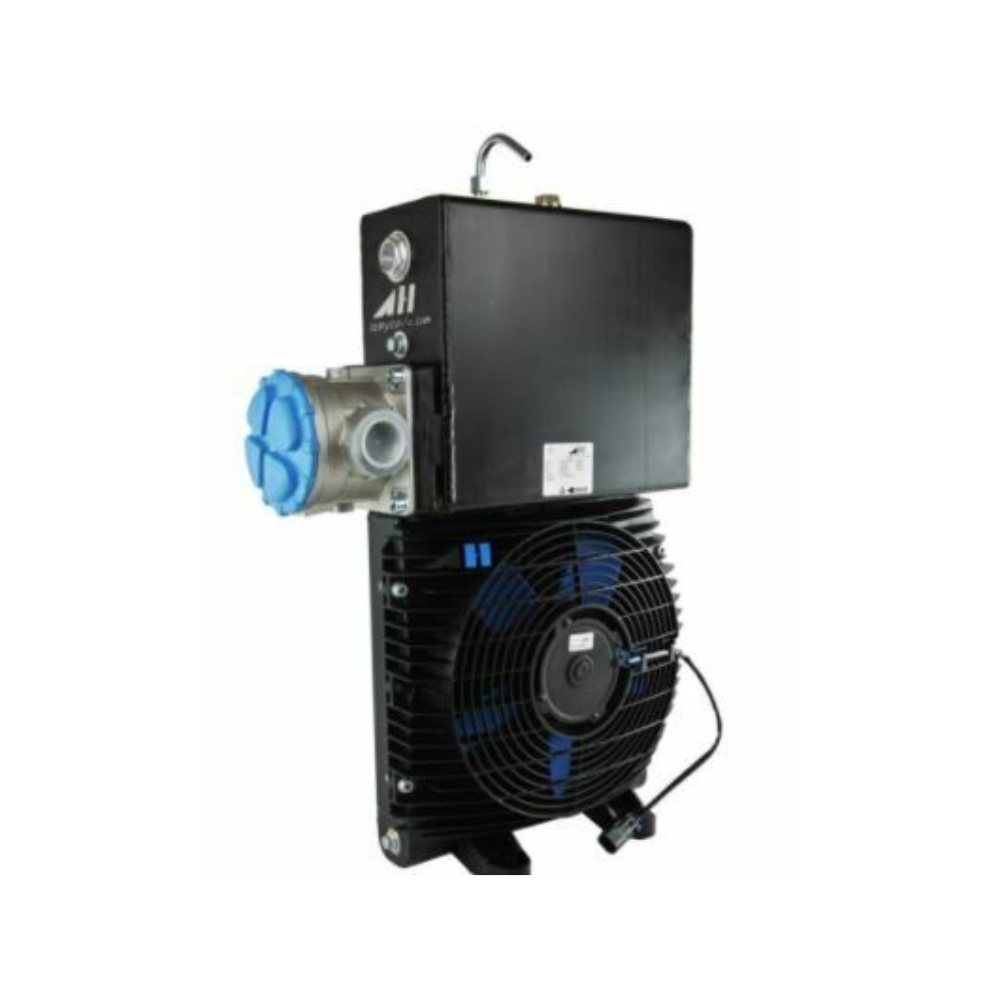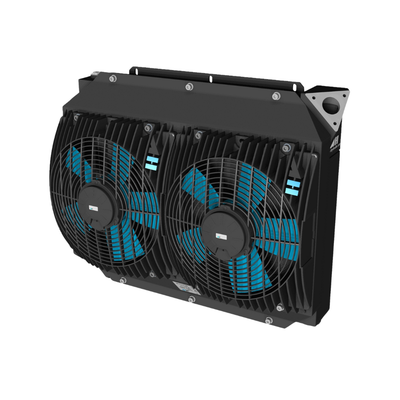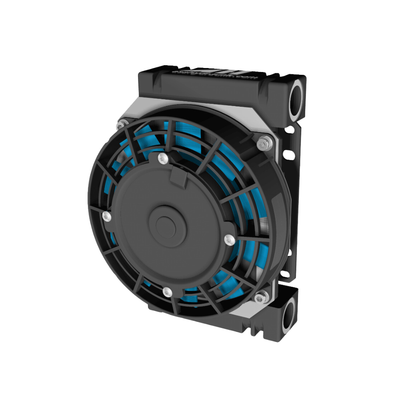
Oil Cooler Smaller Concrete Trucks Etc
|
Austrian-Made Oil Cooler Dc 12v / 24v
For Design assistance and sizing What happens when oil is too hot 1. Shorter Oil Life Hydraulic Oils or Transmission Oils operating at temperatures above 65°C (150°F) will start to deteriorate at an accelerated rate, which will result in shorter oil change periods. For Example, having to change your Hydraulic System's oil every 1000 hours instead of 1500 hours or your transmission oil every 15,000 KM instead of 30,000 KM. This result in more money being spent on Oil and filters. 2 Gasket and Seal Damage Hot Oil damages Gaskets and Seals and this may result in Internal as well as External Leaks. 3. Internal Leaks Internal leaks reduce efficiencies, power, and or torque of hydraulic cylinders, pumps, and motors and in the case of transmissions may cause erratic performance, slow acceleration, and or gear shifting. 4. External leaks External Leaks can make a mess of your mobile equipment as leaks are blown all over the underside of your vehicle, dust and grime will then stick to the oily components creating an ugly sticky mess requiring cleaning 5. Dangerous Slip Hazards Oil leaking or dripping onto a non-absorbent floor or road not only makes a mess but also creates a potentially dangerous slip hazard that may result in an automotive accident with personal and property damage and possible prosecution. 6. Fines for Environment damage and Pollution Oil Leaks onto the ground could be interpreted as contamination and pollution and you risk being fined. The actual or perceived risk of environmental impact from an oil leak is real, so stop that leak or at the least clean it up and save yourself the potential of legal action and a fine or imprisonment! A recent Client of ours was sent a clean-up bill for AU$3,500 when their excavator was left unattended and unchecked over the weekend leaking hydraulic oil into the ground on a particularly sensitive government construction site. 7. Mechanical Damage Large external leaks if left unchecked will reduce or deplete the oil level of the hydraulic oil circuit causing excess friction and even more heat generation, poor performance, and eventually catastrophic mechanical damage. 8. Poor Efficiency Lastly, the Hydraulic system's efficiency is reduced because the oil viscosity changes (usually gets thinner), and more power losses are experienced resulting in even more heat being generated with reduced machine performance and or productivity. If on the hand you operate a piece of equipment UNDER the oil's designed temperature range you risk the following problems. 9. Poor Oil Flow when oil is too cold. An oil that is designed to operate at 10°C to 40°C ambient temperatures will be too thick to flow properly a -5°C, This can cause the machine's oil pump to cavitate which causes accelerated mechanical wear and contamination in the oil. 10. Insufficient Lubrication When a pump cavitates it is not actually pumping as much oil volume as it was designed to do and therefore not enough oil will reach critical mechanical components to produce drive, support loads, reduce friction, and or carry heat away. The result is accelerated mechanical wear and or damage. 11. Temperature Control and Design. As with internal combustion engines that have water cooling and thermostats that control the temperature to a relatively narrow range, thermostat control is also available for oil cooler systems to provide quick warm-up and or cooling down but is also designed to prevent over-cooling.
RE$09-02-2024 |
|
|





